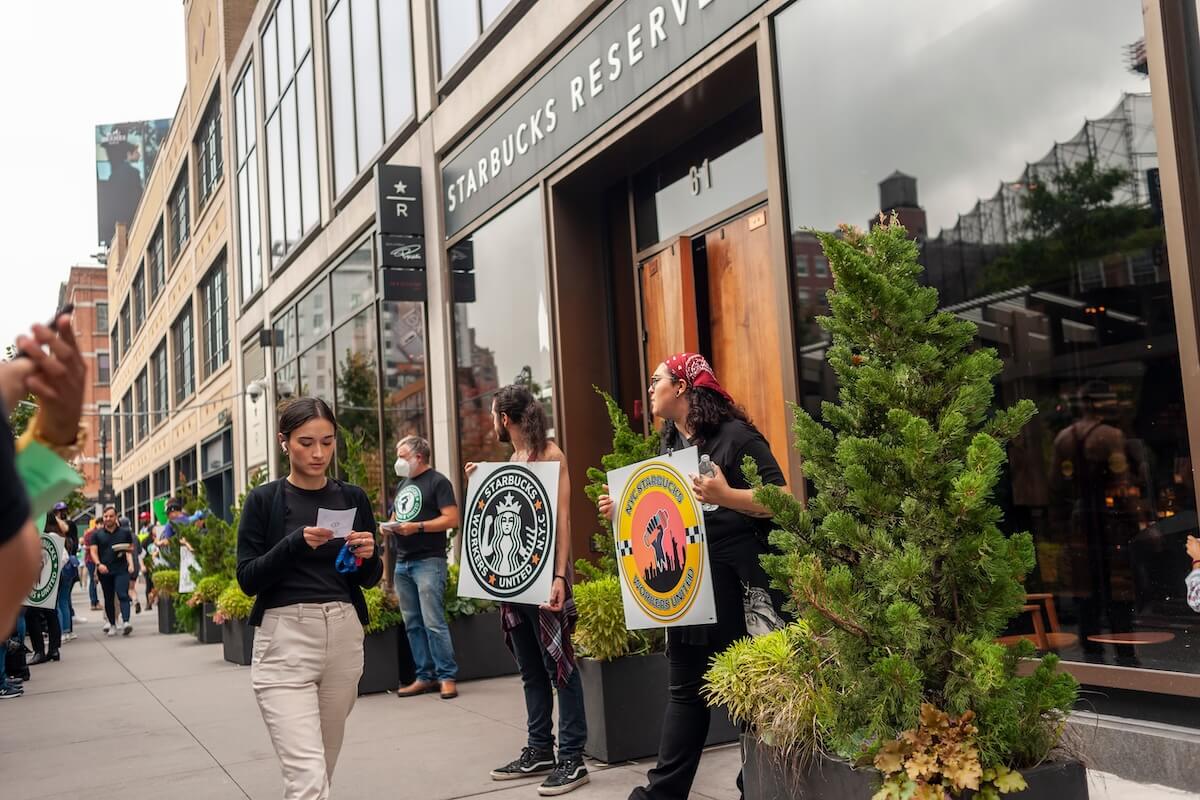Tired: Tradeoffs. Wired: Impact alpha.
A growing network of private fund managers is seeking to prove out the thesis that social impact can deliver higher, not lower financial returns. The shorthand for the emerging approach may be familiar to some readers: impact alpha.
A new report, “The Alpha in Impact,” identifies 10 drivers of such alpha, pulling back the curtain on 29 investments from 13 funds ranging from hybrid firms like Bain Capital and TPG Growth to impact managers like Bridges Fund Management and Impact America Fund (See, “Ten drivers of impact alpha”). Among the ways impact adds financial value: stronger dealflow, lower cost of capital, reduced risk and favorable valuations. Impact, they say, generates outperformance.
Private funds managers deliver outperformance by driving impact
“We’re solving some of the world’s biggest challenges,” University Venture’s Daniel Pianko said at the launch of the new report in New York. “So we’re making more money. Period.”
Impact Capital Managers, a network formed this year, now includes roughly three-dozen venture capital and private equity, debt and hedge fund managers managing some $8 billion in assets, who are staking out this more assertive, less defensive approach.
“There has been vigorous debate as to whether investors can pursue market-rate, risk-adjusted financial returns and positive societal impact as parallel objectives,” said Ben Thornley of the impact consultancy Tideline, which produced the report. “Our analysis found many case studies of fund managers achieving strong returns by investing in firms that have a positive effect on society.”
Managers of over $5 billion aim for high-impact, high-returns investing
Indeed, the findings could signal a new stage of development in impact investing. In the past few years, some impact managers have identified their funds as “market-rate” in distinction to quasi-philanthropic efforts that accept concessionary returns in pursuit of social or environmental impact. A majority of impact investors in this year’s investor survey by the Global Impact Investing Network report they’re seeking market-rate returns.
And what many investors want is not “market-rate” – which connotes “average – but “alpha,” or market-beating.
“Institutional investors are asking, ‘What is different about impact investing?’” said Maya Chorengel of TPG Growth’s Rise Fund, the $2 billion fund co-founded by billionaire Jeff Skoll and U2 frontman Bono. Chorengel says the fund’s impact alpha hypothesis was borne out by an ability to reach entrepreneurs who otherwise wouldn’t pick up the phone to talk to giant TPG. Rise Fund’s impact mission also helped secure better deal terms than other mainstream investors, she said.
Rise Fund’s Impact Multiple of Money: A conversation with TPG’s Bill McGlashan
TPG Growth is now raising Rise II, targeted at $3.5 billion. Chorengel says investors are demanding more data and evidence of the impact alpha, beyond merely clever marketing.
Finding impact alpha
The $10 million Impact America Fund led by Kesha Cash found impact alpha through early and subsequent investments totaling $2.25 million in Oakland-based Mayvenn, an e-commerce platform for independent hair stylists.
Cash spotted a scalable model to drive income opportunities for stylists in low-income communities of color. She pointed subsequent investors, including Andreessen Horowitz, toward an opportunity to tap the annual $9 billion African-American haircare market. Since Impact America’s first investment, the firm has grown revenues 468% and helped 50,000 hair stylists earn an additional $20 million in revenues. Last month, the firm raised $23 million in a Series B round led by Essence Ventures. The driver: Impact America credits mission-alignment with Mayvenn’s founder as helping secure an invitation to participate in later rounds.
Queen Latifah supports Essence fund for women of color in the arts
“There’s no shortage of bold ideas and investible businesses coming from these communities,” Cash told the Tideline team. “The shortage is of investors with the cultural fluency to find and fuel these opportunities with capital and access.”
“Impact alpha” is not unlike other theses that fund managers use to distinguish themselves and find hidden value. The difference is that in identifying investable markets that meet their goals for risk and return, building a pipeline of deals, making investments and working to add value before exiting those investments, they optimize for impact. Impact alpha Investors may set specific goals such as expanded access to education or healthcare, improved energy efficiency, or the creation of good jobs.
Nancy Pfund’s DBL Partners found impact alpha through multiple investments in Farmers Business Network, a San Carlos, Calif. farmer-to-farmer information network. Pfund and DBL saw an opportunity to unlock value throughout the network of independent farmers by making the business case for sustainable farming. The Farmers Business Network team saw the opportunity to retain members and grow revenues.
DBL Partners’ Nancy Pfund: Spotting the Next Tesla and Solar City
Last year, Farmers Business Network raised $110 million in a Series D round led by T. Rowe Price Group and Singapore state fund Temasek. The driver: Differentiated impact sector expertise allowed DBL to create value inside one of their portfolio companies.
The acquisition of Impact Fitness which operates low-cost gyms in underserved communities in Michigan, Indiana and Canada drove impact alpha for the $390 million Bain Capital Double Impact fund and Bridges Fund Management’s U.S. Sustainable Growth Fund, which co-invested in the deal.
Bain and Bridges saw an opportunity to attract top health and managerial talent with the gym’s impact mission, while driving health improvements in low-income neighborhoods. The investors even tied management bonuses to impact metrics (which helped it boost its score on nonprofit B Lab’s impact assessment by 67%).
What we know about Bain Capital’s $390 million Double Impact Fund
“Our goal is to create repeatable formulas for long-term impact alpha,” said Bain Capital’s Chris Cozzone. The firm has grown from 13 to 22 gyms. Almost half of the gym’s members are first-time gym goers. The drivers: The firm’s mission attracted talent and accountability to impact drove operational efficiency. Cozzone admits that Bain Capital is still in the early stages of proving out the thesis.
University Ventures, which has raised more than $300 million across a number of funds, got a taste of impact alpha when it acquired Ponce Health Sciences University, a medical university in Puerto Rico that graduates more than 10% of hispanic doctors in the U.S.
University Ventures saw an opportunity to grow the successful medical training school to fill the U.S. doctor shortage gap by converting it from a nonprofit to mission-driven for-profit. Ponce would only agree to sell if the campus stayed in Puerto Rico and maintained its Puerto Rican enrollment. University Ventures agreed, and since revenues have grown 40% to $39.8 million. Student passage rates have leapt from 68% to 86%. The driver: Alignment around purpose eased the negotiation.
Market-leading returns from solutions to the world’s greatest problems
Beyond tradeoffs
The impact alpha report from Impact Capital Managers and Tideline is one of several efforts to move beyond the debate of whether or not impact investments require tradeoffs between impact and returns. The Omidyar Network drew attention in a recent essay series to the range of investment strategies that already exist all along the spectrum of risks and returns.
The shift in emphasis from “market-rate” to “impact alpha” could help resolve that long-running discussion. In recent years, a consensus has emerged that all kinds of investments have value, and what’s important is providing enterprises with the kind of capital they need, and investors with the returns they expect.
Making Markets Work for the Poor: How the Gates Foundation Uses Program-Related Investments
“Impact alpha” is inclusive of investors who may indeed take their “alpha” returns in the form of enhanced impact. “We should also acknowledge and celebrate that some impact investment strategies may seek to optimize and accelerate key impact returns, such as mitigating climate change or addressing poverty, rather than investment returns,” notes the Tideline report. “A wide range of below-market-rate investments and grant-funded initiatives will also be required to address the world’s most pressing challenges.”
Some investors are embracing that kind of impact alpha. Ceniarth’s Diane Isenberg wrote recently in ImpactAlpha that over the next 10 years, the $325 million family office plans to move about $200 million from “market-rate” funds into what it calls “impact-first capital preservation strategies.” Such managers include Global Partnerships, GroFin, Water Equity, and Root Capital.
Fighting poverty and remaining rich: Ceniarth shifts portfolio to impact-first capital preservation
“If we genuinely wish to deploy capital in ways that will support people and places that are being left behind by market forces, than we cannot delude ourselves into believing that we can have it all,” Isenberg wrote. “If maximizing impact while preserving your money is your goal than we hope to prove that this is very much a viable strategy.”
The Tideline report advances the discussion with empirical evidence. “Instead of debating whether impact objectives detract from the financial performance of a fund,” write Amy Bell, John Griffith, and Thornley in The Alpha in Impact. “The report identifies the ways in which impact objectives enhance financial performance.”











